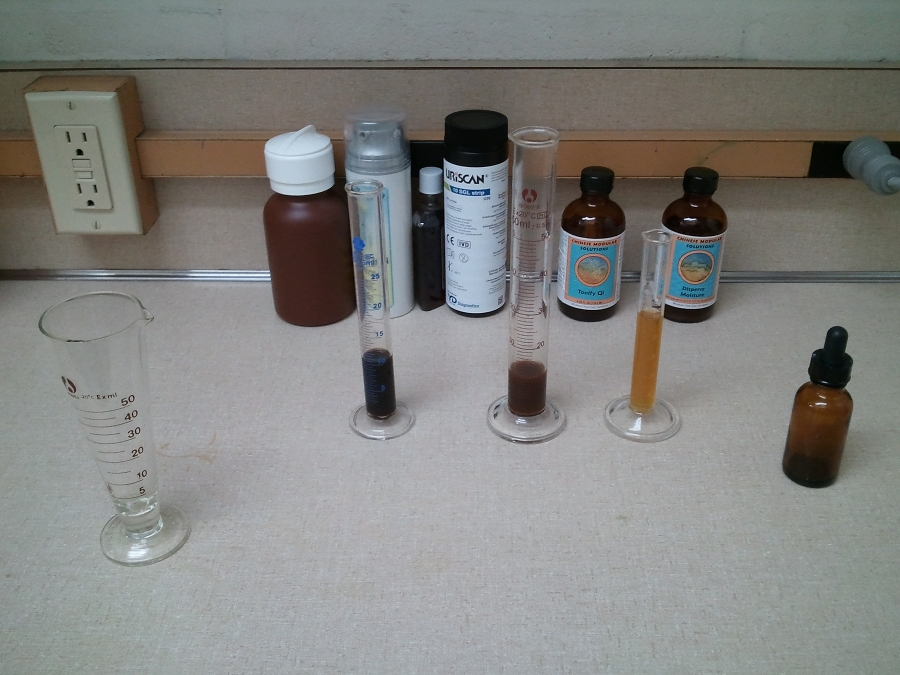 The numbers are horrifying.
The numbers are horrifying.
Ten percent of Americans over age six take antidepressants. Antipsychotic drugs, once reserved for schizophrenics, have become the top-selling class of drugs in the US, with over $14 billion in sales in 2009. ADHD, bipolar and autism diagnoses have exploded in the past two decades with at least 5 million US kids now on psychiatric drugs. Ten percent of boys take drugs for ADHD. Half a million kids take antipsychotics, including preschoolers.
Do Americans really need all of these drugs?
My answer for years has been a resounding NO! And, at last, mainstream thought is catching up with me and other like-minded thinkers.
When Prozac hit the market in the mid-1980s, the "chemical imbalance" theory of mental disorders began its ascendance. The theory was that an imbalance of neurotransmitters was the cause of depression, anxiety, and other psychological disorders, and that drugs were necessary to correct this imbalance.
The trouble is, the cart was put before the horse. In a spectacularly brassy display of marketing illation, drugs developed by pharmaceutical companies were found to affect levels of brain chemicals, and only then was the "chemical imbalance" theory of mental disease was developed -- as a means of selling the drugs.
In real science, as opposed to medical marketing science, one usually hypothesizes and tests for the cause of a disorder before developing a tool for influencing that process.
Nonetheless, the success of the Prozac marketing juggernaut was phenomenal, with medical doctors worldwide clinging onto it even after rigorous meta-analyses of the drug testing data showed that Prozac and other SSRI's were little more than prescription placebos.
In a recent book review, Dr. Marcia Angell, former Editor in Chief of the New England Journal of Medicine, finally agreed with what I, and other doctors, have been saying for years.
"Instead of developing a drug to treat an abnormality, an abnormality was postulated to fit a drug," Dr. Angell said. "Or similarly," she says, "one could argue that fevers are caused by too little aspirin."
I have treated patients with depression, anxiety and other behavioral disorders for years, through a variety of means. Acupuncture, lifestyle, supplementation and herbs can all positively affect people with psychological disorders -- in fact, just recently, research demonstrating the effectiveness of acupuncture on people with schizophrenia was released. From my experience, and from what I've seen of the research, these means are far more effective than drugs at long-term relief free from side effects.
Of course, the mere thought that I, or other physicians like me, might say something like "alternative therapies are more effective than drugs at treating anxiety and depression" would give the folks at the FDA a case of the fantods, so I wouldn't dream of making a statement like that. (Since the FDA allowed Lilly Pharmaceuticals to lie through its teeth about the effectiveness of Prozac for decades, even after the APA's landmark study disproved Lilly's claims, I'm sure they wouldn't permit honest, research-based statements. That would be a bridge too far.)
What, then, are some current explanations for depression and anxiety that make more sense than "oh noes, you have a Prozac deficiency!!"?
One theory that I find interesting in its coherence is the Malaise Theory of depression. This theory is based on the idea that depressive behavior in humans demonstrates the same symptoms as what is called "sickness behavior" in animals. When an animal is sick, it acts fatigued, has disturbed sleep patterns, moves and acts with extreme reticence, and shows an inability to take pleasure in normally pleasurable activities, such as eating and sex.
But in animals, this behavior is the response to an infection or injury, because it is energy-conserving, risk-minimizing, and immune-enhancing, allowing the animal's body to utilize its resources for opposing the infection or repairing the injury. In other words, depression is a normal response to a major physical illness.
Which may be why, in some cases, I have been able to resolve depression by helping people to eliminate chronic gastrointestinal infections. In other cases, the body may be reacting as if there were an illness present even though there is none, prompting an ongoing, inappropriate depressive response. Thus, by eliminating the signals of illness, we can change the behavioral response.
Using this model of depression, it becomes apparent that antidepressant drugs, on the rare occasions that they do work, are enabled by analgesic properties which have nothing to do with their manipulation of brain chemicals. Other analgesics, including herbal or dietary analgesics can be more effective with considerably less danger to the individual.
I am also intrigued by the powerful analogies and symbology of Traditional Chinese Medicine when it comes to the causes of mental disorders. For Chinese medicine since the time of the Song dynasty, emotional dysfunction serves the reverse role of what I have just described -- emotional imbalance results in physical symptoms, and emotions play a fundamental role in treating the majority of diseases under this paradigm. In modern times, psychiatric illness was stigmatized much as it has been in the West, and the treament by traditional Chinese doctors focused on the physical.
Jing shen bing, the Chinese term for mental disorders, is seen as damage to one of the five phases of matter -- wood, fire, earth, metal and water -- each of which is associated with different emotions, such as joy, anger, anxiety, thought, sorrow, fear of fright. And, not surprisingly for a neoconfucian society, both the absence or excess of any of these emotions is to be avoided. Through both acupuncture and herbs, the balance of qi through these phases was restored, normalizing the aberrant behavior.
Yet the value of psychological interventions was hardly ignored. Though it is not handled directly by a profession such as psychology, as in the west, behavioral therapy in the East is indirectly provided by religion. Alan Watts, in his seminal work, Psychotherapy East and West, wrote that "If we look deeply into such ways of life as Buddhism, Taoism, Vedanta and Yoga, we do not find either philosophy or religion as these are understood in the West. We find something more nearly resembling psychotherapy."
And, in fact, the addition of psychotherapy or talk therapy, or behavioral therapy is critical to a successful treatment for mental disorders. Probably the most frequent referral I make is to mental health professionals.
When I am feeling optimistic, I see paradigm shifts such as the abandonment of the brain chemical theory of behavior disorders as a sign of a healthier future not only for patients but for the health care system as a whole.
Today, I and my peers currently serve as an underground railroad largely bypassing that system, shuttling people to health through hidden pathways -- out of sight, out of mind, and noted by the mainstream medical polity only when we appear to be a threat to the status quo.
Which is a shame. A lot of people could use our help, especially for the treatment of mental disorders.
Dr. Avery Jenkins is a chiropractic physician specializing in the treatment of people with chronic disorders. He can be reached at alj@docaltmed.com or by calling 860-567-5727.
 Patients have frequently come to me saying that previous doctors have told them that their illness is "all in my head."
Patients have frequently come to me saying that previous doctors have told them that their illness is "all in my head."
















 Which makes the denial of coverage for this disorder little short of heinous, particularly because the solutions we have at hand are relatively successful and not particularly experimental. Unfortunately, even for those people with health insurance, denial of coverage for surgical transition is the norm, via a “Transsexual Exclusion Clause” which excludes all medical procedures related to a person’s transgender status.
Which makes the denial of coverage for this disorder little short of heinous, particularly because the solutions we have at hand are relatively successful and not particularly experimental. Unfortunately, even for those people with health insurance, denial of coverage for surgical transition is the norm, via a “Transsexual Exclusion Clause” which excludes all medical procedures related to a person’s transgender status.










